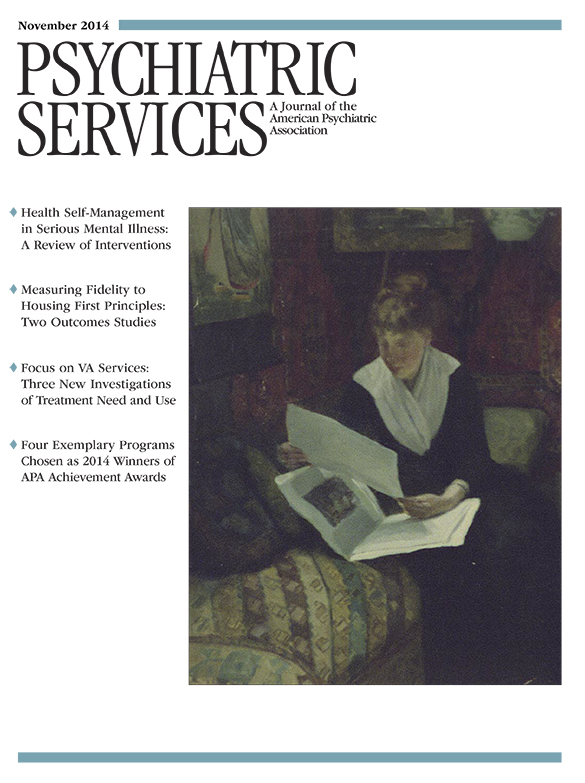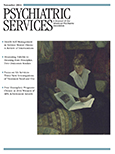In 2008 the Joint Commission on Accreditation of Healthcare Organizations developed a set of core performance measures for hospital-based inpatient psychiatric services (HBIPS). For psychiatry, the HBIPS core measures consist of seven standards that address aspects of inpatient services; two of the seven standards measure the time of physical restraint (HBIPS-2) and seclusion use (HBIPS-3) (
1). These data are now published as part of an Inpatient Patient Quality Review program. Their publication is intended to permit consumers to compare psychiatric facilities and to encourage hospitals to improve the care they provide.
It is expected that these measures will be linked to Medicare payments as part of hospital value-based purchasing (HVBP). Hospitals that report higher use of seclusion and restraint will be viewed as providing a lower quality of care and will be penalized by decreased Medicare reimbursement (
2).
History
Reduction and elimination of the use of seclusion and restraints is hardly a new issue. The beginnings of modern psychiatry are often represented by Pinel and Tuke’s liberation of psychiatric patients from their shackles at the end of the 18th century. However, chains were soon replaced by other means of restraint, such as the straitjacket and the seclusion room. Every advancement was eventually rejected as coercive and unacceptable.
The current movement regarding the morbidity associated with restraints is attributed to the 1998 Pulitzer Prize–winning investigative five-part series published by the
Hartford Courant (
3). It was alleged that between 1988 and 1998, 142 deaths occurred from these practices. As a result of the
Hartford Courant series, the U.S. General Accounting Office initiated an investigation that resulted in an Interim Final Rule issued in 1999 by the Center for Medicare and Medicaid Services (CMS) that imposed requirements on the use of seclusion and restraints.
In the field of psychiatry, guidelines for the use of seclusion and restraint were changing. In 1994, a review by Fisher (
4) concluded that seclusion and restraint could prevent injury and reduce agitation, but it also noted their traumatic impact on patients and staff. In a review from 2000, Busch and Shore (
5) concluded that seclusion and restraint are no longer seen as a therapeutic modality. They cited studies that demonstrated considerable practice variation across hospitals, after the analysis controlled for socioeconomic and clinical characteristics, and they concluded that milieu-related variables, such as location, staffing, and staff philosophy, were more important than patient characteristics in determining rates of seclusion and restraint.
Concurrent to these developments in psychiatric research was the growing impact of the consumer and recovery movements. The consumer movement has been especially successful in gaining representation by patient advocates in public agencies and hospitals (
6). The recovery-oriented model has had an equally large impact on psychiatric care (
7). In this model, seclusion and restraint are viewed as antithetical to recovery in their disregard for the autonomy of the patient and as a failure to empower the patient to take responsibility for his or her illness and treatment. Some recovery-oriented professionals have called for the elimination of seclusion and restraints, describing elimination as “life and death issue” that is part of the transformed system of care associated with the recovery movement (
8) and referring to current CMS rules that permit last-resort use of these practices as “regulatory scotoma” (
9) because the rules seem to turn away from progress toward their elimination. Other recovery-oriented professionals acknowledge the need for seclusion and restraint when a patient is “unable to make his or her own decisions and poses a serious and imminent risk” (
10).
Protests against elimination of seclusion and restraint
The clinical reality of eliminating seclusion and restraint has been described by Lieberman (
11) as an idealistic but “fatuous” goal and a case of “polemics replacing sound clinical judgment.” A reduction in use of these practices could require an increase in overmedication to manage aggressive behavior or a disruption to the entire inpatient milieu in the service of a single patient. More important is the possibility that hospitals could find ways of refusing to admit patients who are likely to require seclusion and restraint by transferring the problem elsewhere, sending patients to public hospitals or to jails and prisons (
12).
A more moderate approach has been proposed: to focus less on the elimination of seclusion and restraint and to acknowledge their occasional necessity and to develop “methods for humane, respectful, recovery-oriented involuntary interventions” (
13). There is evidence to suggest that patients could experience seclusion or restraint as beneficial (
14). Modified use of seclusion or restraint in which a staff member is present 100% of the time to comfort and explain the reason for its use and to explain what the patient needs to accomplish in order to be released may represent a more humane, recovery-oriented use of these treatment modalities.
Three cases
We present three clinical examples and discuss the issues regarding seclusion and restraint that they raise. In the first example, a suicidal patient with diagnoses of anorexia nervosa and borderline personality disorder was restrained for 12 days because of repeated successful efforts to pull out a nasogastric tube, thus increasing the risk of esophageal puncture with each forced replacement of the tube. In the second example, a man with schizophrenia repeatedly swallowed small objects. Seclusion for several days was required because he was able to escape the surveillance of a constant companion and find small objects to swallow, which required three emergency gastroscopies. The third example is of a woman admitted for treatment of mania. On her first night in the hospital, she sat in the center lounge shouting and singing. When staff intervened by using relaxation techniques in the comfort room and offering PRN medications, she harangued them about being a “prisoner” in the hospital. At a community meeting after this event, fellow patients charged staff with negligence for avoiding seclusion and allowing one patient to humiliate herself and disrupt the milieu.
The first two examples highlight recognizable clinical scenarios in which the use of restraint and seclusion was required to prevent serious self-injury after less restrictive means failed. The suicidal woman with anorexia required restraints until we were able to establish a therapeutic relationship with her, which decreased her suicidal behavior. The patient who swallowed objects stopped this behavior after a medication change, but we remained unclear regarding its motivation and what alternatives to seclusion might have been considered. With the patient with mania, by not using seclusion we observed a balance between the competing interests of the patient’s autonomy and that of other patients in a therapeutic milieu. Other examples of a patient disturbing the milieu include excessive intrusiveness with other patients or their visitors, frightening behavior, and sexual advances or exposure.
Among the three patients, an absence of insight and the preemptory nature of the behavior rendered efforts at discussion and negotiation unsuccessful. In the first two cases, using seclusion or restraint provided a situation in which efforts to establish a therapeutic relationship with the patient were able to continue and were partially successful. As the threat of decreased Medicare reimbursement for failure to eliminate seclusion and restraint becomes more imminent, it is likely that facilities will search for alternative treatment situations. For example, because of inadequate facilities, a psychiatric hospital could refuse to accept patients with anorexia who might require forced feeding or patients with a history of violence.
The case of the suicidal woman with anorexia offers a suggestion for future investigation. The hospital ethics committee conducted an expedited review, and hospital officials consulted by telephone with the state department of mental health. Both procedures affirmed the need for use of restraint. A formalized consultation service that assists hospitals in the management of extreme circumstances might result in hospitals’ greater willingness to continue treating challenging patients. Whether use of seclusion or restraint under these conditions would still be considered a negative HBIPS indicator might also be reviewed.
Conclusions
Elimination of seclusion and restraint could lead hospitals to refuse admission to certain patients and to greater use of PRN medications, an increase in negative therapeutic outcomes for other hospitalized patients, and staff demoralization and injury. A mechanism should exist to preserve the humane use of seclusion and restraint, reviewed on a case-by-case basis. Otherwise, we are concerned that elimination may result in poorer quality of care—the opposite of its intended effect.
Acknowledgments and disclosures
The authors report no competing interests.

